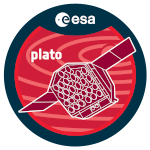The detection of buried magnetic fields in evolved solar-like stars has very recently been made possible through the measurement of their impact on the oscillations of stars. It is fundamental to detect more of these magnetized red giants, to understand the angular momentum transport along the evolution of solar-like stars, and how the internal magnetic field impacts the dynamo field in the convective envelope. However, the task of internal magnetic detection in a significant number of evolved stars remains challenging as the mixed-mode frequency pattern is highly complex and affected by rotational effects, while modes of different radial orders are often intertwined. This talk aims to build a bridge between theoretical prescriptions on magnetized oscillations and asteroseismic data analysis to facilitate a future automatized search of magnetized stars. We investigate the effect of magnetic fields inside evolved stars with solar-like oscillations on the estimation of the period spacing of gravity-mode components of simulated mixed gravito-acoustic modes. We demonstrate that the strong dependency of the amplitude of the magnetic signature on oscillations with the frequency leads to biased estimates of gravity-mode period spacings towards lower values. Therefore, we derived a new corrected stretching function of the power spectrum density to account for the presence of magnetic signatures on their frequencies. We then show that a global analysis of the oscillation frequency pattern through various period spacing estimates and across a broad frequency range leads to measurements of magnetic field amplitudes inside the core of red giants, leading to the first asteroseismic global parameter proven to carry detectable magnetic signatures. This method can be applied widely to the thousand red giants observed with good frequency resolution by Kepler and paves the way towards the understanding of deep magnetic activity in stars.

 PDF version
PDF version
